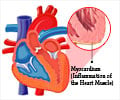Each 5 decibel increase in environmental noise is associated with a 34% increase in risk for a heart attack, stroke, or other cardiovascular disease event.

‘Limiting the exposure to high level noise is the need of the hour. It activates amygdala, the deep brain structure that plays a vital role in processing emotions and responding to stress.’
Read More..




"We observed that stress-associated brain centers, specifically the amygdala, potentially serve as the conduit by which noise triggers changes that lead to disease," says lead author Michael T. Osborne, MD, from the Cardiac Imaging Research Center and division of Cardiology at MGH.Read More..
In a study published in the European Heart Journal, Osborne and colleagues report that high noise levels lead to activation of the amygdala, a deep brain structure that plays a central role in processing emotions and responding to stress.
They used radiotracer-enhanced positron-emission tomography/computed tomography (18F-FDG-PET/CT) imaging to study the brains and arteries of 498 adults at study outset and followed them for 5 years to see whether higher levels of noise exposure associated with a major adverse cardiovascular event, commonly abbreviated as "MACE."
MACE was defined as CVD-related death, heart attack (myocardial infarction), severe uncontrolled chest pain (unstable angina), stroke, heart failure, or need for an intervention to reopen blocked coronary or peripheral arteries (revascularization).
To determine noise exposure, they estimated average transportation noise over 24 hours at each subject's home address with United States Department of Transportation Data and adjusted their findings for potential contributors to CVD and MACE such as air pollution (a known risk factor for heart and lung disease), socioeconomic factors, and existing CVD risk factors.
Advertisement
Importantly, PET-CT imaging showed that higher levels of noise exposure were associated with an increase in activity in the amygdala and an increase in inflammation of arteries, an early and critical event in the development of CVD.
Advertisement
Based on their findings, the investigators plan to further study the link between noise exposure and other diseases (including diabetes and obesity) with an eye towards developing interventions to mitigate disease.
Source-Eurekalert












